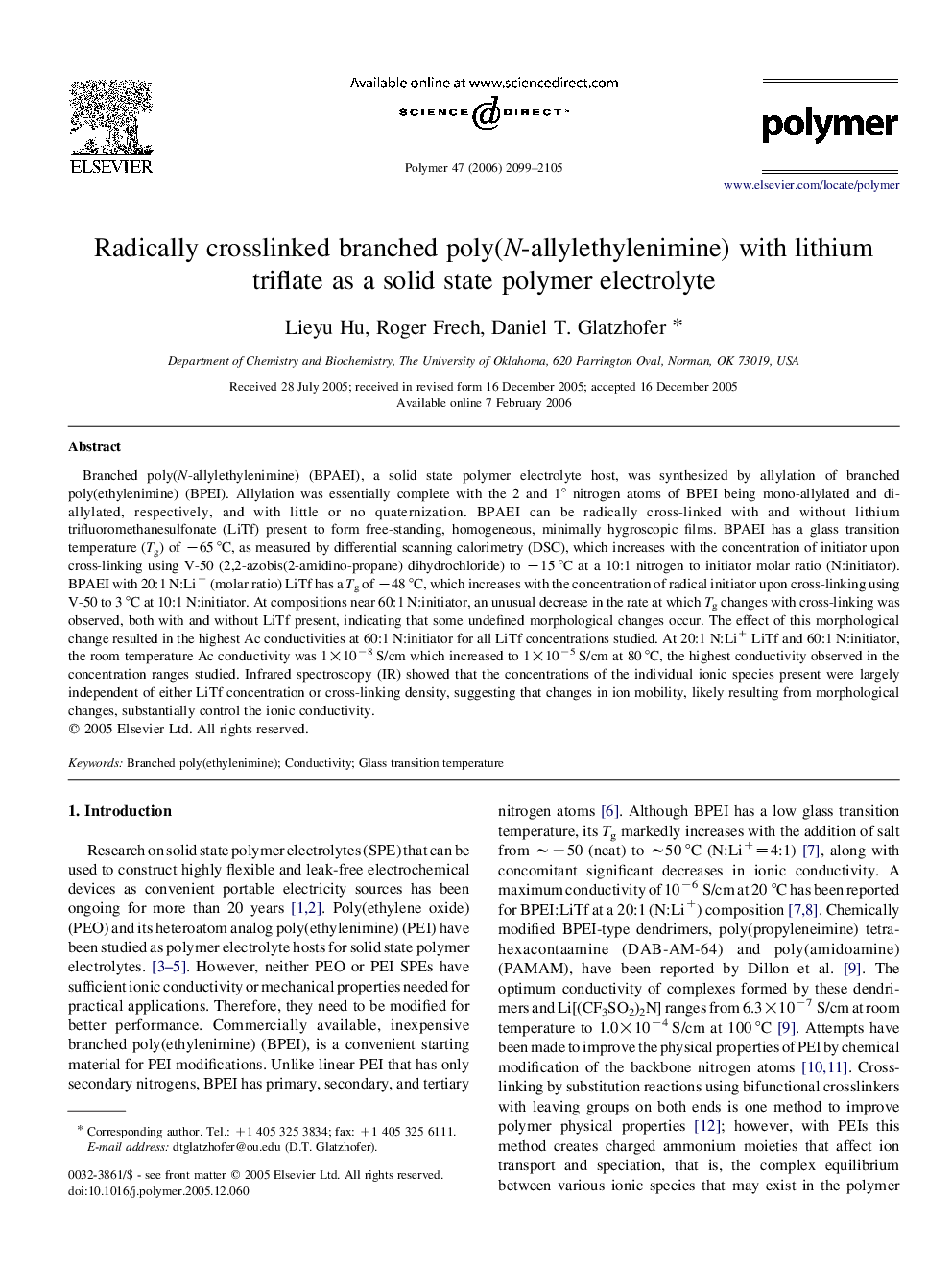| کد مقاله | کد نشریه | سال انتشار | مقاله انگلیسی | نسخه تمام متن |
|---|---|---|---|---|
| 5187331 | 1381126 | 2006 | 7 صفحه PDF | دانلود رایگان |
عنوان انگلیسی مقاله ISI
Radically crosslinked branched poly(N-allylethylenimine) with lithium triflate as a solid state polymer electrolyte
دانلود مقاله + سفارش ترجمه
دانلود مقاله ISI انگلیسی
رایگان برای ایرانیان
موضوعات مرتبط
مهندسی و علوم پایه
شیمی
شیمی آلی
پیش نمایش صفحه اول مقاله

چکیده انگلیسی
Branched poly(N-allylethylenimine) (BPAEI), a solid state polymer electrolyte host, was synthesized by allylation of branched poly(ethylenimine) (BPEI). Allylation was essentially complete with the 2 and 1° nitrogen atoms of BPEI being mono-allylated and di-allylated, respectively, and with little or no quaternization. BPAEI can be radically cross-linked with and without lithium trifluoromethanesulfonate (LiTf) present to form free-standing, homogeneous, minimally hygroscopic films. BPAEI has a glass transition temperature (Tg) of â65 °C, as measured by differential scanning calorimetry (DSC), which increases with the concentration of initiator upon cross-linking using V-50 (2,2-azobis(2-amidino-propane) dihydrochloride) to â15 °C at a 10:1 nitrogen to initiator molar ratio (N:initiator). BPAEI with 20:1 N:Li+ (molar ratio) LiTf has a Tg of â48 °C, which increases with the concentration of radical initiator upon cross-linking using V-50 to 3 °C at 10:1 N:initiator. At compositions near 60:1 N:initiator, an unusual decrease in the rate at which Tg changes with cross-linking was observed, both with and without LiTf present, indicating that some undefined morphological changes occur. The effect of this morphological change resulted in the highest Ac conductivities at 60:1 N:initiator for all LiTf concentrations studied. At 20:1 N:Li+ LiTf and 60:1 N:initiator, the room temperature Ac conductivity was 1Ã10â8 S/cm which increased to 1Ã10â5 S/cm at 80 °C, the highest conductivity observed in the concentration ranges studied. Infrared spectroscopy (IR) showed that the concentrations of the individual ionic species present were largely independent of either LiTf concentration or cross-linking density, suggesting that changes in ion mobility, likely resulting from morphological changes, substantially control the ionic conductivity.
ناشر
Database: Elsevier - ScienceDirect (ساینس دایرکت)
Journal: Polymer - Volume 47, Issue 6, 8 March 2006, Pages 2099-2105
Journal: Polymer - Volume 47, Issue 6, 8 March 2006, Pages 2099-2105
نویسندگان
Lieyu Hu, Roger Frech, Daniel T. Glatzhofer,